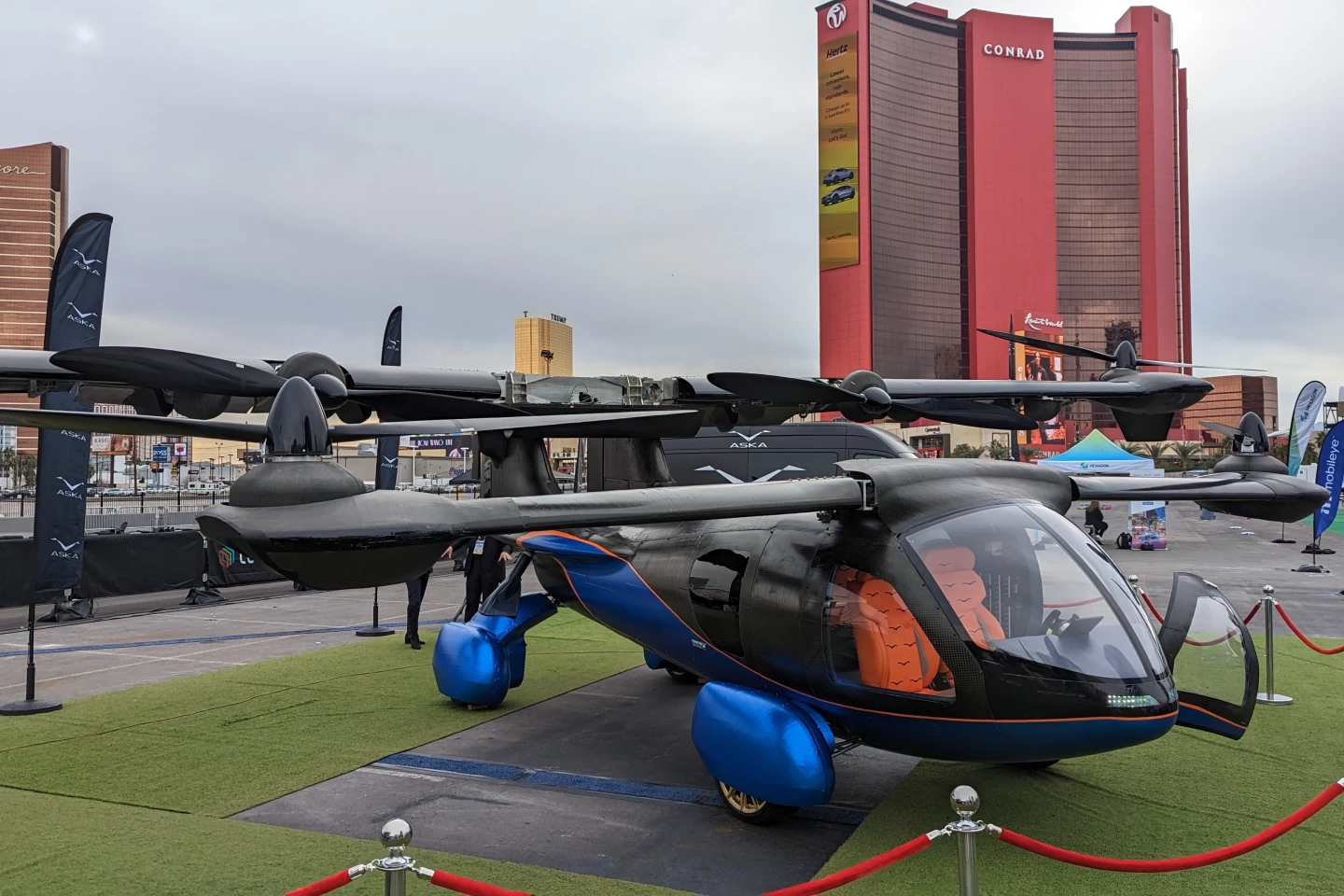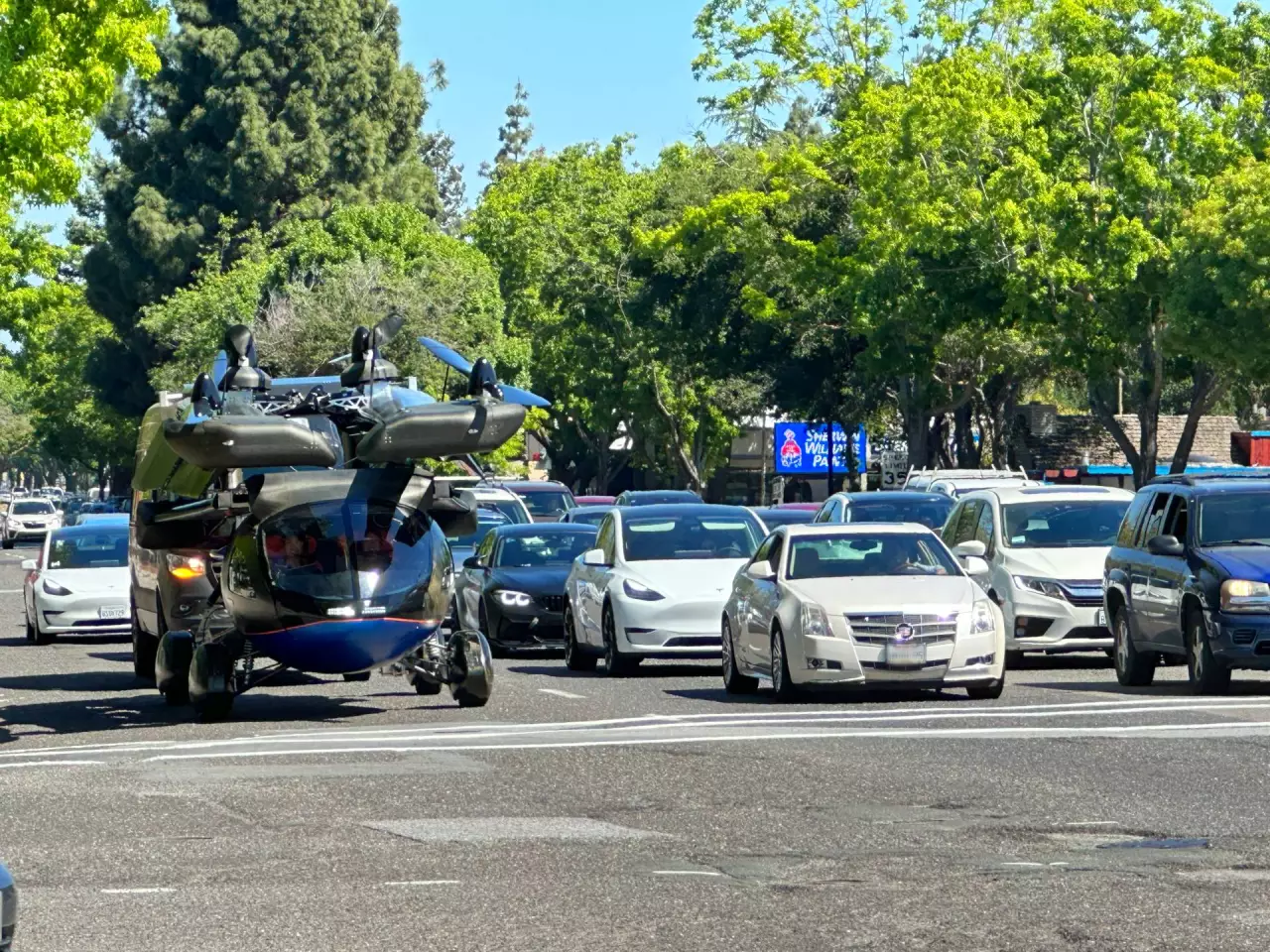When most folk think about flying cars, we think of machines that seamlessly convert from street to air mode, that can take off and land vertically, and that can cruise in the air and on the highway. The US$789,000 Aska A5 promises to do it all.
The ambition wrapped up in this project is breathtaking. It's not an easily-registered three-wheeler, it's a four-seat car the size of an SUV, capable of traveling at highway speeds. It'll look completely ridiculous doing so, but it's capable.
Not only does it convert to an eVTOL aircraft automagically, at the touch of a button, it's a transitioning eVTOL aircraft with tilt-capable propellers and wide wings for cruising, offering a crazy 250-mile (400-km) flight range at speeds up to 150 mph (240 km/h), thanks to a range-extended hybrid powertrain. Oh, and it glides so well as a winged aircraft that you can take off and land on a runway – even a short runway – if you've got one handy.
It's bonkers. It's hubristic lunacy. It's impossible. It's also already prototyped.

Aska hasn't shown any footage yet, but the company says it's already "conducting flight testing," after receiving a Certificate of Authorization and Special Airworthiness Certification from the FAA. As we pointed out a few weeks ago, this is not a full type certificate allowing the commercial sale of this aircraft, it's more of a limited, one-off green light to fly the prototype.
And now the company's announced it's "the world's first flying car to receive authorization to drive on public roads from the United States (US) Department of Motor Vehicles (DMV)."
Aska says its prototype A5 has "successfully conducted more than 300 miles [480 km] of road testing around Silicon Valley with a DMV number plate."
“Being the first electric flying car developer to be successfully conducting driving tests on local roads in California validates our efforts to develop an eVTOL that is roadable and with an emphasis on safety,” says Maki Kaplinsky, Chair & COO/Cofounder, in a press release.

As with the FAA airworthiness certificate, this is a (probably conditional) one-off, rather than an endorsement that this company's ready to start manufacturing street-legal cars. But it's a one-off that's required Aska to take this crazy-looking contraption down to a DMV office, and have a presumably extremely bewildered office drone inspect the prototype and give it the thumbs-up. That would've been a fun day.
Aska has already taken more than 60 pre-orders, representing deposits on $50 million in pre-sales. According to the company's website, the A5 is "on target for 2026 commercialization, subject to certification approvals."
Subject indeed! As we've pointed out every time we've seen this audacious project, there's a good reason most "flying cars" are three-wheeler trikes that can sneak through street approvals disguised as motorcycles. If you want to sell a car that folk can just go out and drive on the road, it needs to meet automotive safety standards.
That means it needs to satisfy crash testing requirements. You have to start talking about things like crumple zones, airbags, child seat tethers, and all the other things automakers have to build into their cars. Meeting these requirements is laborious and expensive, and from an aerospace perspective also results in a vehicles that is probably way too heavy.

There are also reasons why there are very few other personal eVTOL companies working on a winged, transitioning aircraft: it makes the project much more aerodynamically and mechanically complex, and introduces potential points of failure. And that's without including the fact that these wings all fold in to let you drive the car on the street.
Perhaps Aska is planning to sell this thing as a kit build, in which case owners could potentially go and register them as home-built cars with the DMV and kit-built aircraft with the FAA. But it doesn't seem that way; the company's next target is G1 status with the FAA, a stepping stone on the path to full FAA type certification.
So all in all, we're quite bewildered. Not just by the outrageous idea of this thing, but by the considerable progress Aska has demonstrated. Check out a video below.
Source: Aska









